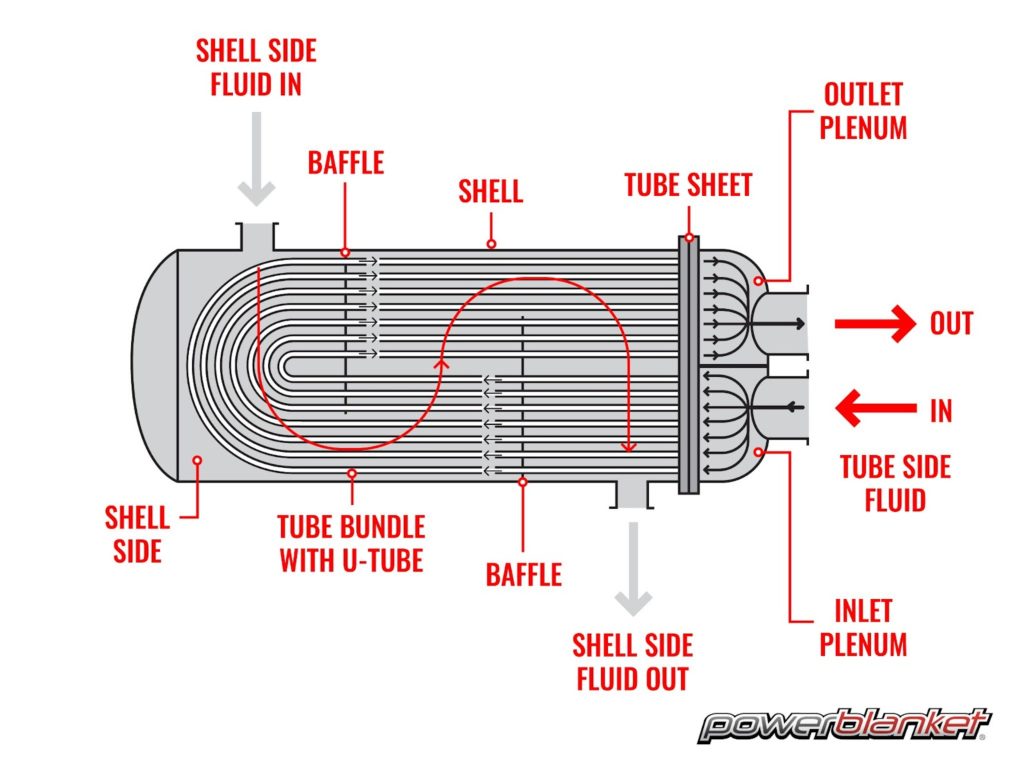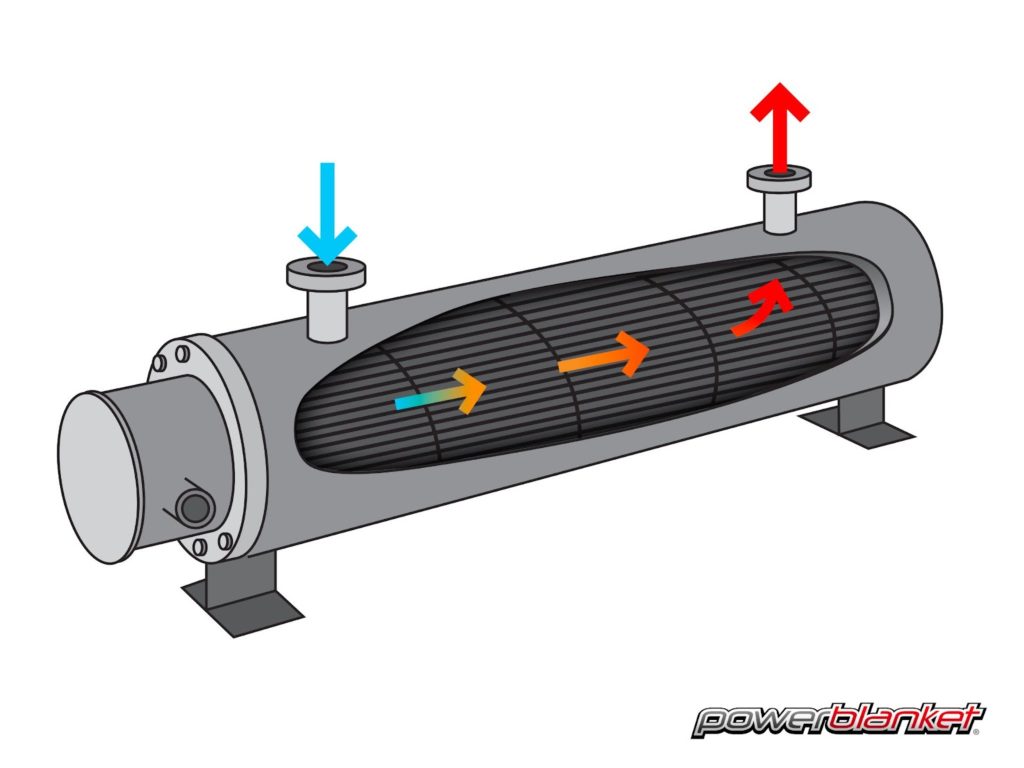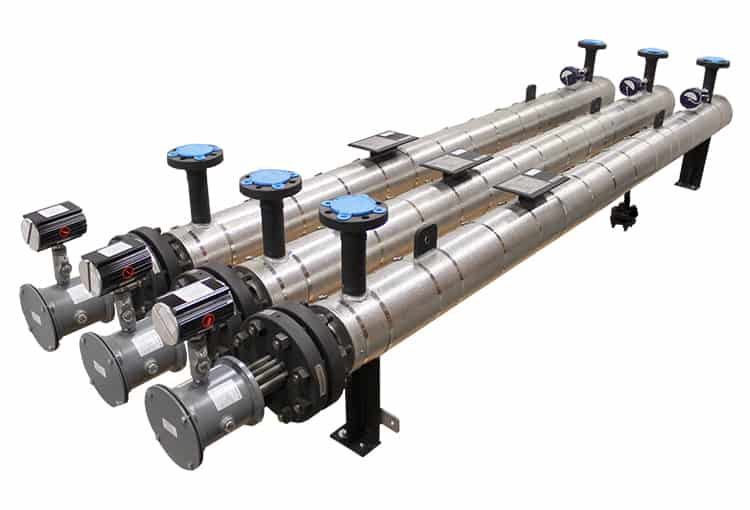Electric circulation heaters are very versatile and useful process heaters. Common applications will flow liquids or gasses through the heater and provide very stable, reliable temperatures for these processes. The exchange of heat is dependent upon the liquid flowing, the flow rate, and the residence time or time through the heater.
Many critical processes require heat to be created and passed to the process. Most of these are flowing, and the tried and true method of doing this is with a shell and tube heat exchanger:
In the example above, the fluid to be heated is pumped or otherwise pushed into the vessel. Inside of the vessel are tubes. These tubes have a product flowing through them (heat transfer medium) that is heated. When the fluid flowing through the vessel contacts the tubes with a heated medium in it, the heat of the fluid is increased (or decreased if you are cooling the fluid).
There are many types of fluids and vapors that can be passed through the tubes to heat the tank fluid. Steam, glycol/water, hot oils, water…just to name a few. The management of these fluids involves a great deal of equipment. It is a tried and true method of heating many processes. There are many different styles of this type of heat exchanger as well.
Electric heat exchangers have electrically resistive wires inside of the tubes (Called electric heating elements) that create heat. Temperatures can range from -260F to as high as 2500F. Electric heating elements are very efficient at transferring heat to the product flowing through the vessel.
When voltage is applied to the resistor within the heating element, heat is created. Transferring this heat to a process is just as easy as it is with a heat exchanger.
The product requiring the heat is passed over the elements. Temperature sensors verify both the process temperature and the temperature of the heating elements to make sure that it does not get too hot.
Electric circulation heaters are extremely versatile, allowing precise temperature control. They are also more energy-efficient than traditional heat exchangers. By converting your process heating to an electric circulation system, you can save on maintenance costs while meeting sustainability goals.
Heat exchangers rely heavily on the indirect heating of the heating medium that they need in the process. No matter the medium, the process, or the temperature, there is a certain amount of btu required (btu= the amount of energy required to heat a product).
Once a process can define the needed btu’s, many heating methods can be considered to do that job. Electric circulation heaters should be considered for this job.
There are several reasons why-
- The heat created by an electric heater produces no Nox Emissions. If your company has a sustainability or green initiative, looking into converting your process to an electric source of heat could help you to meet those objectives.
- Electric heat is 100% efficient- or so they say. Think about it…every ounce of electricity is converted into heat- so… 100%.
- Electric heating control systems have nearly an infinite turndown ratio. If your system needs to run at 8%, that’s all you pull power-wise. Sampling rates can be as often as 6 times per second, and with the proper power control system, outputs can be adjusted faster than that (as fast as 1/120th of a second if the sampling rate could keep up!). You will only pull the amperage that is needed to keep your system running.
- Much easier to maintain. No steam, steam lines, or steam traps. No heat transfer fluids or expansion tanks, or condensate return lines. Just push your liquid or gas through the heater chamber and into your process.
- Redundancy is a big factor. Many of you are familiar with the concept of building redundancy into your pumping systems, for example. Two pumps are installed for one duty. When one goes down, you have one 100% spare. That way, you can work on the other unit while the system is still running. The same can be designed for electric circulation heaters…by designing 2x the capacity in the heater itself or by having a second heater.
- Higher heat flux can be achieved by an electric heater. You have to be careful here though as higher heat flux or what is referred to as watt density on electric heaters can be harmful to both the electric heater and your process. Your PowerPro by Powerblanket experts can help you through that process.
Using an electric process heater to replace your heat exchanger is a viable option.
Give us a call at Powerblanket/PowerPro today.
We make industrial process heaters that are top of the line in quality, efficiency, and safety.





